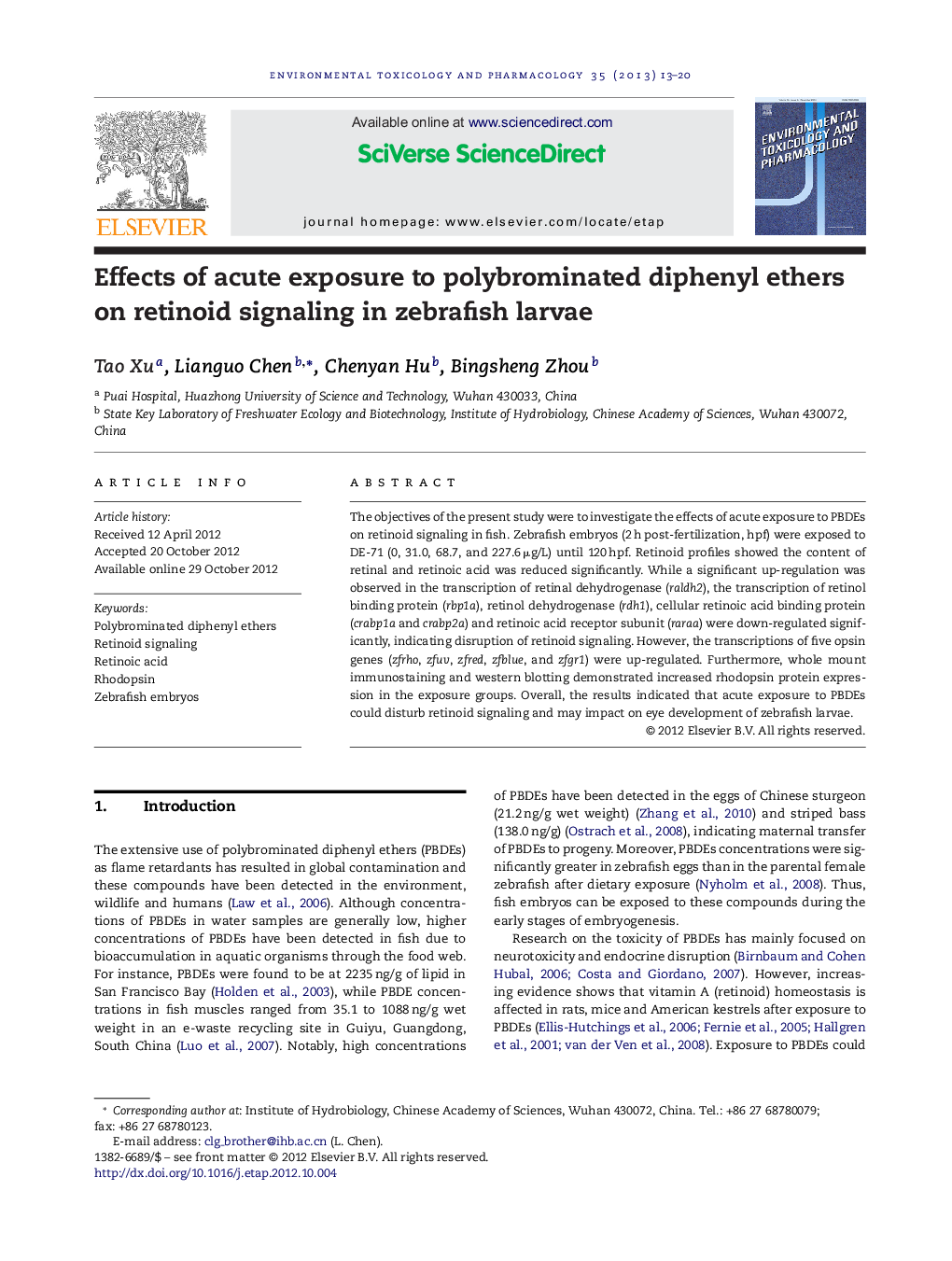| Article ID | Journal | Published Year | Pages | File Type |
|---|---|---|---|---|
| 2583315 | Environmental Toxicology and Pharmacology | 2013 | 8 Pages |
The objectives of the present study were to investigate the effects of acute exposure to PBDEs on retinoid signaling in fish. Zebrafish embryos (2 h post-fertilization, hpf) were exposed to DE-71 (0, 31.0, 68.7, and 227.6 μg/L) until 120 hpf. Retinoid profiles showed the content of retinal and retinoic acid was reduced significantly. While a significant up-regulation was observed in the transcription of retinal dehydrogenase (raldh2), the transcription of retinol binding protein (rbp1a), retinol dehydrogenase (rdh1), cellular retinoic acid binding protein (crabp1a and crabp2a) and retinoic acid receptor subunit (raraa) were down-regulated significantly, indicating disruption of retinoid signaling. However, the transcriptions of five opsin genes (zfrho, zfuv, zfred, zfblue, and zfgr1) were up-regulated. Furthermore, whole mount immunostaining and western blotting demonstrated increased rhodopsin protein expression in the exposure groups. Overall, the results indicated that acute exposure to PBDEs could disturb retinoid signaling and may impact on eye development of zebrafish larvae.
► We examined the effect of acute PBDEs exposure on retinoid signaling and the potential implications for eye development in zebrafish larvae. ► PBDEs reduced the retinal and retinoic acid content in the larvae. ► The transcriptions of genes involved in retinoid transport and metabolism were altered. ► PBDEs increased opsins expression in eye photoreceptors.
